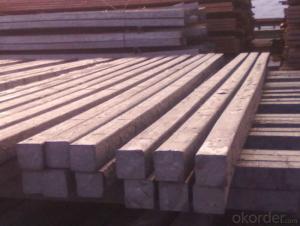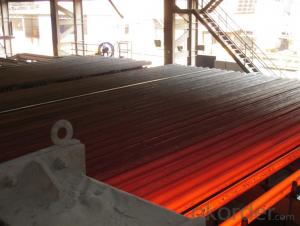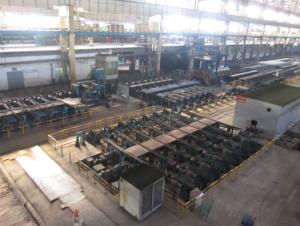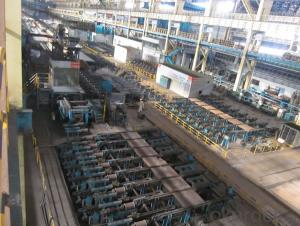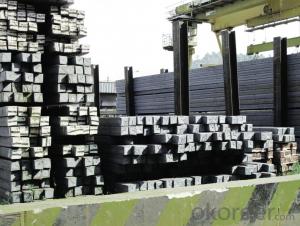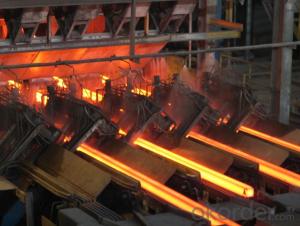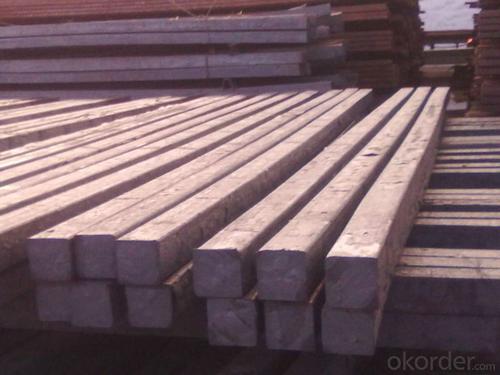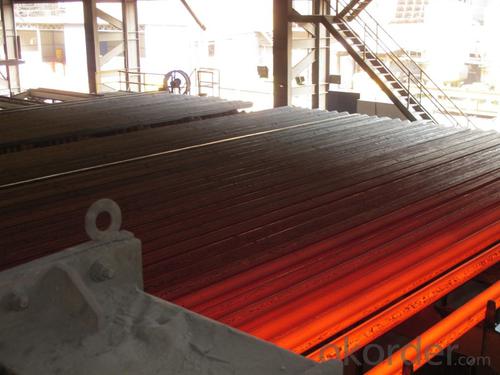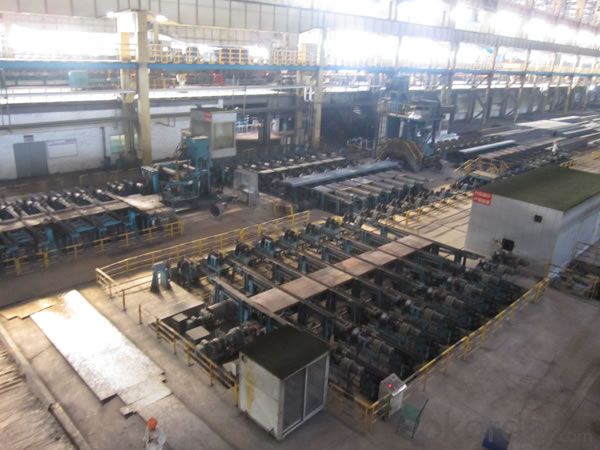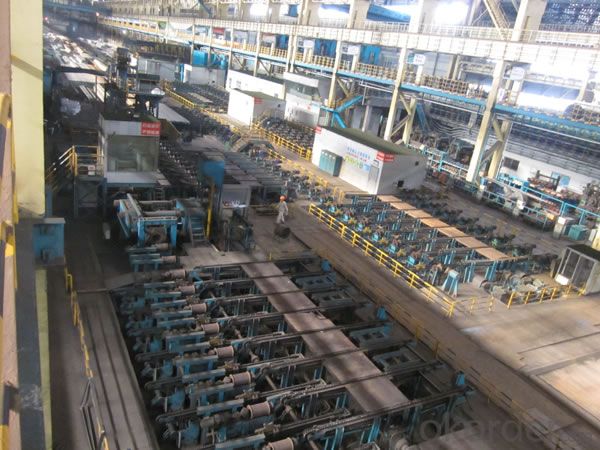Prime quality prepainted galvanized steel 660mm
- Loading Port:
- Tianjin
- Payment Terms:
- TT OR LC
- Min Order Qty:
- 100 m.t.
- Supply Capability:
- 10000 m.t./month
OKorder Service Pledge
OKorder Financial Service
You Might Also Like
Construction building material galvanized color prepainted cold
rolled steel coil
Prepainted steel sheet is coated with organic layer, which provides higher anti-corrosion property and
a longer lifespan than that of galvanized steel sheets.
The base metals for prepainted steel sheet consist of cold-rolled, HDG electro-galvanized and hot-dip
Alu-zinc coated. The finish coats of prepainted steel sheets can be classified into groups as follows:
polyester, silicon modified polyesters, polyvinylidene fluoride, high-durability polyester, etc
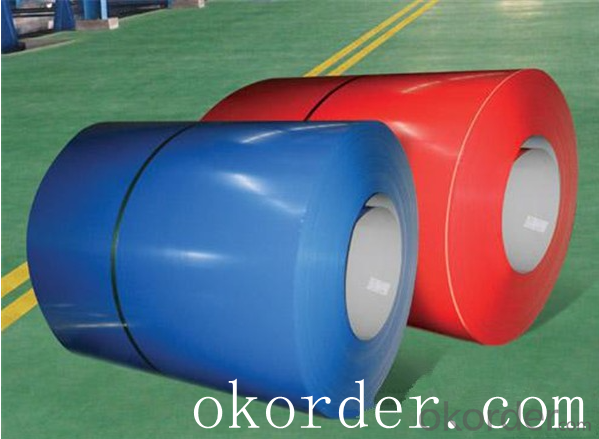
Standard and Grade :
Pre-paint galvanized steel coil | ||||
ASTM A755M-03 | EN10169:2006 | JISG 3312-2012 | ||
Commercial quality | CS | DX51D+Z | CGCC | |
Structure steel | SS GRADE 230 | S220GD+Z | CGC340 | |
SS GRADE 255 | S250GD+Z | CGC400 | ||
SS GRADE 275 | S280GD+Z | CGC440 | ||
SS GRADE 340 | S320GD+Z | CGC490 | ||
SS GRADE550 | S350GD+Z | CGC570 | ||
S550GD+Z | ||||
Application:
Outdoor | Roof, roof structure, surface sheet of balcony, frame of window, door of garage, rolled shutter door, booth, Persian blinds, cabana, etc |
Indoor | Door, isolater, frame of door, light steel structure of house, home electronic appliances, ect. |
Specifications
Commodity Name: Prepainted Galvanized Steel Coil
Standard: AISI, ASTM, DIN, GB, JIS
Grade: TDC52D+Z
Thickness 0.13-8.0mm
Width:600mm-1350mm
Zinc Coating:275g/m2
Polyester Coating Thickness:Top and Back coating thickness depend by Buyer Requirement.
Polyester Coating Type:2/2,1/2m,1/2.
Polyester Type: Polyester, silicone modified polyester, high durability polyester (HDP), polyvinylidene fluoride (PVDF)
Unit Roll Weight:5-20tons
Place of Origin Shanghai , China (Mainland)
Surface Treatment :Color Coated
Manufacture Progress:HRC-CRC-GALVANIZED-COLOR COATED
Application : Construction, electrical, transportation, steel plant, composite board plant, steel tile factory
Payment & Shipping Terms:T/T ,L/C, and FOB CHINA
Minimum Order Quantity: 25Tons
Packge Type: Moisture-proof paper inner,Steel outside,Bundle by steel rope.
Package in Container : Wood as a foot pad, wire rope reinforcement,PPGI steel coil tied together by steel rope.
- Q: Are steel billets used in the manufacturing of construction machinery?
- Steel billets are a common choice for the manufacturing of construction machinery. They serve as semi-finished products, acting as raw materials across various industries, including construction machinery manufacturing. To create these billets, molten steel is cast into a solid form and then undergoes additional shaping and sizing processes. The high strength, durability, and versatility of steel billets make them well-suited for constructing robust components and structures in construction machinery. Examples of parts that can be manufactured using steel billets include chassis, frames, buckets, booms, and arms, among others. By utilizing steel billets, construction machinery becomes capable of withstanding the demanding conditions and heavy loads commonly encountered in construction projects.
- Q: What are the potential applications of steel billets in the textile aftermarket?
- The textile aftermarket offers a multitude of possibilities for the use of steel billets. One area where they can be applied is in the manufacturing of textile machinery and equipment. Steel billets are versatile enough to produce various components such as gears, shafts, and frames, thanks to their exceptional strength and durability. These qualities enable them to withstand the demanding conditions of textile production. Another potential application of steel billets in the textile aftermarket lies in the production of accessories and hardware. Steel billets can be utilized to create a wide array of essential accessories, including buttons, zippers, and buckles. These accessories play a crucial role in the textile industry and require materials that are both robust and resistant to wear and tear. Furthermore, steel billets can be employed in the fabrication of textile molds and tooling. Textile molds are utilized to create intricate patterns and designs on fabrics, while tooling is necessary for cutting, shaping, and finishing textile products. Steel billets provide the necessary strength and stability required for these applications. Additionally, steel billets can be utilized in the construction of textile warehouses and storage facilities. The high load-bearing capacity of steel makes it an excellent choice for constructing durable and secure storage structures. These warehouses can effectively house textile products, raw materials, and machinery, ensuring their safety and longevity. In conclusion, the potential applications of steel billets in the textile aftermarket are extensive. They can be used in machinery and equipment production, accessories and hardware creation, molds and tooling fabrication, as well as warehouse and storage facility construction. With their strength, durability, and reliability, steel billets are an indispensable material in the textile industry.
- Q: What is the difference between hot-rolled and cold-rolled steel billets?
- Hot-rolled steel billets and cold-rolled steel billets are two types of steel that undergo different manufacturing processes, resulting in distinct characteristics and properties. When producing hot-rolled steel billets, the steel is heated to a high temperature and then rolled while still hot. This process allows for easy shaping and forming into various sizes and shapes. Additionally, hot-rolling creates a rough surface finish and a scaled outer layer due to exposure to high temperatures. Generally, hot-rolled steel billets have a larger grain structure, which can result in a less precise and uniform final product. However, they also possess improved mechanical properties, such as higher strength and toughness, making them suitable for applications where strength is important, but surface finish is not a priority. In contrast, cold-rolled steel billets are produced by cooling the steel to a low temperature and rolling it at room temperature. This process allows for tighter dimensional tolerances and a smoother surface finish compared to hot-rolled steel billets. Additionally, cold-rolling results in a more refined grain structure, which enhances the overall strength, hardness, and durability of the steel. Cold-rolled steel billets are commonly used in applications where precise dimensions, surface finish, and uniformity are required, such as in the automotive, construction, and appliance industries. To summarize, the main difference between hot-rolled and cold-rolled steel billets lies in the manufacturing processes and resulting properties. Hot-rolled steel billets are formed at high temperatures, resulting in a rough surface finish and larger grain structure. Cold-rolled steel billets, on the other hand, are formed at room temperature, leading to tighter dimensional tolerances, a smoother surface finish, and a more refined grain structure. The choice between hot-rolled and cold-rolled steel billets depends on specific requirements and applications, with hot-rolled steel billets being preferred for their superior strength and cold-rolled steel billets for their precise dimensions and surface finish.
- Q: How are steel billets used in the production of oil and gas equipment?
- The production of oil and gas equipment heavily relies on steel billets, which act as vital components. These semi-finished steel products typically possess a square or rectangular shape and serve as the primary raw material for manufacturing various oil and gas equipment. Primarily, steel billets find their application in pipe production, playing a crucial role in the transportation of oil and gas from extraction sites to refineries or distribution points. After being heated, the billets are rolled into seamless or welded pipes, depending on specific requirements. These pipes are specially designed to endure high pressure, corrosive environments, and extreme temperatures, thus making them suitable for transferring oil and gas across long distances through pipelines. Furthermore, steel billets are utilized in the creation of valves and fittings, integral components of oil and gas equipment. Valves facilitate the control of oil and gas flow within pipelines, allowing for regulation and shut-off when necessary. On the other hand, fittings, such as connectors and couplings, ensure the proper connection and alignment of different pipe sections. Manufacturing these components typically involves forging or machining steel billets to guarantee strength, durability, and resistance to harsh operating conditions. In addition to pipes and valves, steel billets also play a significant role in the production of drilling equipment, including drill bits, drill collars, and drill pipes. These components are subjected to extreme forces and abrasive environments during the drilling process. To withstand such demanding conditions encountered during oil and gas exploration, steel billets undergo forging, heat treatment, and machining processes. In conclusion, the significance of steel billets in the oil and gas industry cannot be overstated. Their application in the manufacturing of pipes, valves, fittings, and drilling equipment is vital for the extraction, transportation, and processing of oil and gas. The exceptional strength, durability, and resistance to harsh conditions possessed by steel billets make them an ideal choice for constructing reliable and efficient oil and gas equipment.
- Q: How do steel billets contribute to the manufacturing of sports equipment?
- The manufacturing of sports equipment benefits greatly from the use of steel billets. Firstly, steel billets serve as the primary material for the production of steel bars and rods. These bars and rods are then utilized to create the framework and structure of sports equipment, including golf clubs, tennis rackets, and hockey sticks. The exceptional strength and durability of steel make it the perfect material for these applications, as it can withstand the intense impact forces and stresses that occur during sports activities. Furthermore, steel billets are also employed in the manufacturing of various components for sports equipment, such as weights, dumbbells, and barbells. These components necessitate a material with high density that can handle heavy loads, and steel provides the necessary strength and stability. Additionally, steel billets find use in the production of accessories for sports equipment, such as ball bearings, springs, and fasteners. Despite their small size, these components play a vital role in the overall performance and functionality of sports equipment. Steel's exceptional resistance to corrosion and its ability to endure extreme conditions make it the preferred choice, ensuring long-lasting and reliable performance. Moreover, steel billets enable the production of high-quality and precision-made parts for sports equipment. Steel's malleability and formability allow it to be shaped into various intricate designs and configurations, guaranteeing that sports equipment meets the specific requirements of athletes and performs optimally. In conclusion, steel billets are a crucial element in the manufacturing of sports equipment. Their strength, durability, versatility, and formability make them the ideal material for producing frames, components, and accessories that enhance the performance and longevity of sports equipment.
- Q: How are steel billets used in the manufacturing of industrial compressors?
- Industrial compressors require steel billets as a crucial part of their manufacturing process. These billets, essentially semi-finished steel products in the shape of a rectangular solid, are the starting material for making different compressor components. To begin with, steel billets are heated to high temperatures and then passed through rolling mills to shape them into specific forms like bars, rods, or sheets. These processed steel billets are then used to fabricate important compressor components such as the crankshaft, connecting rods, cylinder blocks, and piston rings. The crankshaft, which converts the piston's reciprocating motion into rotational motion, is typically forged from a steel billet. The billet undergoes controlled heating, shaping, and machining processes to achieve the desired shape and strength necessary to withstand the high pressures and forces within the compressor. Likewise, connecting rods, responsible for connecting the piston to the crankshaft, are also made from steel billets. These billets are machined precisely and undergo various heat treatment processes to ensure optimal strength and durability. Cylinder blocks, the primary structural frame of the compressor, are often casted from steel billets. The billets are melted and poured into molds to achieve the desired shape. Once solidified, further machining is performed on the cylinder block to create the cylinder bores, mounting surfaces, and other necessary features. Moreover, steel billets are utilized for producing piston rings, which play a crucial role in maintaining proper compression and preventing leakage. The billets are machined and then subjected to heat treatment processes to enhance wear resistance and ensure a precise fit within the cylinder. In summary, steel billets are indispensable in the manufacturing of industrial compressors as they provide the raw material for creating vital components. The ability to shape and process steel billets enables the production of robust, durable, and high-performance compressors capable of meeting the demanding requirements of various industries.
- Q: How are steel billets used in the manufacturing of industrial machinery parts?
- Steel billets are used in the manufacturing of industrial machinery parts as they serve as the raw material for shaping and forming various components such as gears, shafts, and frames. These billets are heated and then passed through a series of processes like forging, machining, and welding to create the desired shape and size required for the machinery part. The strength and durability of steel make it an ideal material for industrial machinery, ensuring reliable performance and longevity.
- Q: What are the different types of steel billet cutting defects?
- There are several different types of steel billet cutting defects that can occur during the cutting process. These defects can have varying degrees of severity and can impact the quality and integrity of the final product. Some common types of steel billet cutting defects include: 1. Burr formation: Burrs are small, unwanted pieces of metal that are left behind on the edges of the cut. They can be caused by factors such as improper cutting blade alignment, excessive cutting speed, or worn-out cutting blades. Burrs can affect the dimensional accuracy of the billet and may require additional processing to remove. 2. Cracks: Cracks can occur during the cutting process due to the high stress and heat generated. They can result from factors such as improper cutting speed, inadequate cooling, or material inconsistencies. Cracks can compromise the structural integrity of the billet and can lead to failure in the final product. 3. Surface imperfections: Surface imperfections can include scratches, dents, or gouges on the surface of the billet. These defects can be caused by factors such as improper handling, inadequate lubrication, or worn-out cutting blades. Surface imperfections can affect the appearance of the final product and may require additional processing to rectify. 4. Incorrect dimensions: Cutting defects can also manifest as deviations from the desired dimensions of the billet. These deviations can arise from factors such as improper cutting blade alignment, inaccurate measurements, or machine malfunctions. Incorrect dimensions can result in compatibility issues during subsequent processing steps or in the final product. 5. Slag inclusion: Slag is a byproduct that can be present in the steel billet. During the cutting process, if the cutting blade encounters slag, it can become embedded in the cut edge. Slag inclusion can lead to structural weakness and reduced mechanical properties in the final product. It is essential to identify and rectify these cutting defects to ensure the production of high-quality steel billets. Regular maintenance and inspection of cutting equipment, proper training of operators, and adherence to quality control measures can help minimize these defects and ensure the production of defect-free steel billets.
- Q: How are steel billets used in the manufacturing of energy sector components?
- Steel billets are crucial in the production of various components used in the energy sector. These billets are typically created through continuous casting, a process where liquid steel is poured into a mold and solidifies into a long, rectangular shape. Within the energy sector, steel billets are the primary raw material for manufacturing a wide range of components. One common application is in the production of pipelines. These billets are heated and then rolled or forged to create seamless or welded pipes, which are used to transport oil, gas, and other fluids over long distances. The strength and durability of steel make it an excellent material for pipelines, ensuring the safe and efficient transportation of energy resources. Steel billets also play a role in the production of power generation equipment. They are shaped and machined into components such as turbine blades, shafts, and rotors, which are vital for power plant operation. Steel's exceptional mechanical properties, including high tensile strength and corrosion resistance, make it suitable for withstanding the harsh conditions and high temperatures experienced in power generation processes. Moreover, steel billets are used in the manufacturing of renewable energy infrastructure, like wind turbine towers. These billets are transformed into large cylindrical sections that provide structural support for wind turbines. The strength and stability of steel guarantee that wind turbines can withstand the forces exerted by the wind and efficiently generate electricity. In conclusion, steel billets are essential in the energy sector as they serve as raw materials for pipelines, power generation equipment, and renewable energy infrastructure. Their strength, durability, and resistance to corrosion make them ideal for enduring demanding conditions and ensuring the reliability of energy sector components.
- Q: What is the role of steel billets in the construction of residential buildings?
- Steel billets are an essential component in the construction of residential buildings as they serve as the raw material for manufacturing various structural steel elements. These billets are heated, shaped, and transformed into different forms such as beams, columns, and reinforcing bars, which provide strength and stability to the building's framework. Additionally, steel billets are also used in the fabrication of other critical components like wall panels and roof trusses, ensuring durability and safety in residential construction.
Send your message to us
Prime quality prepainted galvanized steel 660mm
- Loading Port:
- Tianjin
- Payment Terms:
- TT OR LC
- Min Order Qty:
- 100 m.t.
- Supply Capability:
- 10000 m.t./month
OKorder Service Pledge
OKorder Financial Service
Similar products
Hot products
Hot Searches
Related keywords
